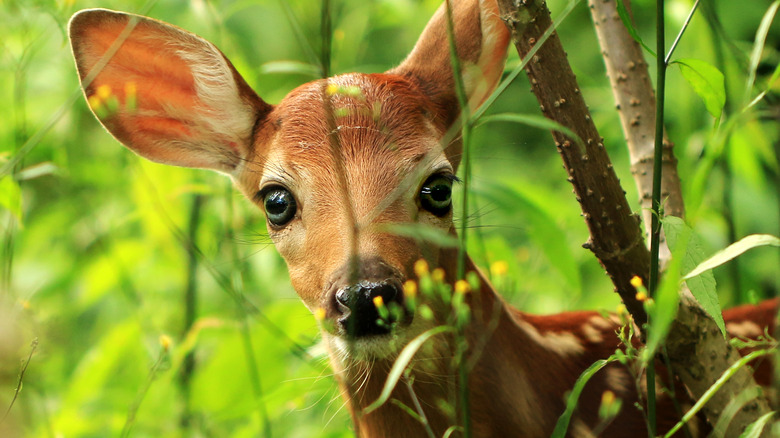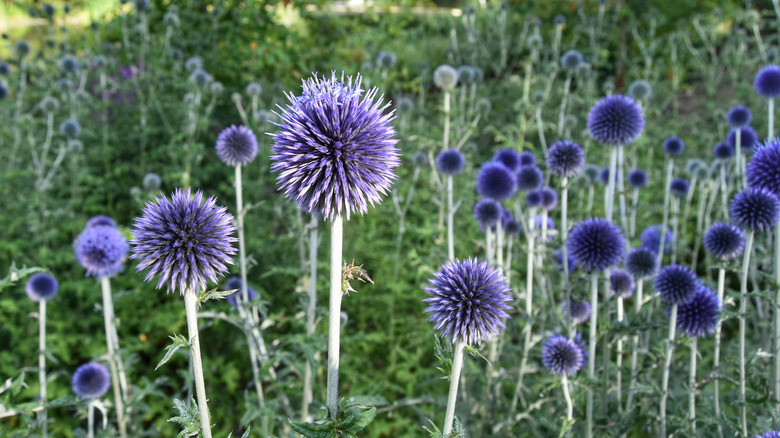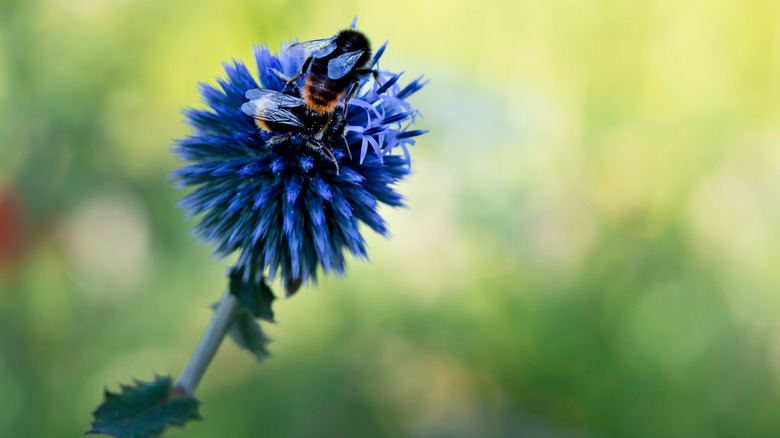This Plant Can Boost Bees While Keeping Deer Out Of Your Garden
Have you banked on the promise that deer-resistant plants will protect your garden, only to find chewed stems in the middle of your rose bushes at dawn? Or have you lost beautiful budding berries to deer chomps despite snuggling them next to what was supposed to be deer-resistant lavender or mint plants? Deer have a rapacious appetite to nibble the first fruits of your favorite plants and then irreverently stomp down any surrounding bits they manage to leave behind. Add to that, your garden starts sprouting just about the time their fawns, typically born April through June according to Native Animal Rescue, are also getting hungrier by the minute.
Don't give up on bordering your garden with deer-resistant plants just yet. It's an old-school line of defense that works, provided you figure out how to combine things deer hate — strong smells and prickly plants — with another universal solution that deer cannot work around: height. One of the best plants to help make this happen is the Blue Glow plant, more commonly known as a globe thistle.
A tall dream come true
Deer can stretch to heights as high as six feet, says Better Homes & Gardens, so short border plants that can simply be leaned over are going to be vulnerable to antlered thievery. An average Blue Glow globe thistle (scientific name: Echinops bannaticus) can reach heights of 5 feet tall and spread as much as 3 feet across, according to Gardenia. They are deer-resistant, not only for their body-blocking height but also thanks to their spiky 2-inch blooms that may look pretty from afar, but definitely mean business when you're up close.
Deer dodge fuzzy, prickly plants for the most part because of the uncomfortable way they feel on their tongue. The golf ball-size bloom on Blue Glows goes way beyond uncomfortable. It'll pierce anything it touches. In fact, gardeners themselves should strongly consider gloves when picking blooms for a bouquet of cut flowers. According to the Missouri Botanical Garden, the plant's prickliness is reflected in its name. Echinos is the Greek word for hedgehog. An added bonus with Blue Glow globe thistles is that they sway in the breeze, and deer do not like unexpected movements.
Goodbye deer; hello bees
The Blue Glow globe thistle is a gift that keeps on giving in other ways as well, particularly on a pressing issue that is on the mind of many plant growers today: building pollinator-friendly gardens. Gardeners are desperate to fight the bee shortage that is jeopardizing the ecosystem we depend on for our food supply. Making intentional choices to add as many pollinator-friendly plants as we can to our backyards has the potential to help on a global scale.
So, here's the best news: Bees love the blue glow globe thistle. As do butterflies, says High Country Gardens. The globe makes a nice landing pad for bees, who also love the color blue. Per Save the Bees, this is because the blossoms of blue, violet, and purple hued flowers contain more sweet nectar than any other colors. In addition, globe thistles bloom from mid to late summer, giving bees and butterflies a feeding supply after those early spring blossoms on other plants have run dry. This truly makes the Blue Glow globe thistle an attractive and multifaceted plant.
From deer resistance to pollinator friendliness, globe thistles check the most important boxes. Add to that their exceptional height and the fact that they're easy to grow without becoming invasive as well as drought-resistant, and we may have finally found a border plant we can rely on with confidence.


